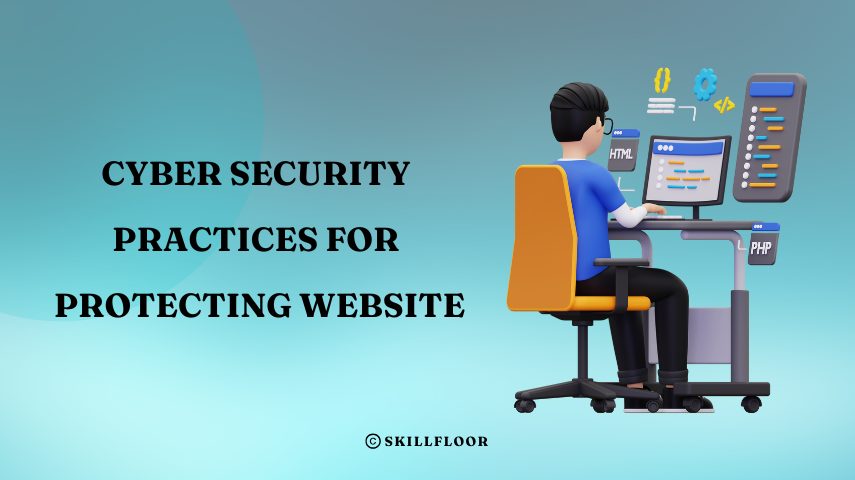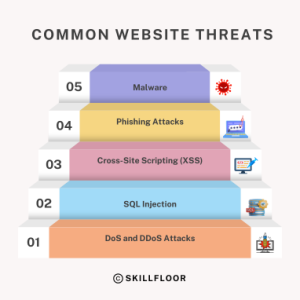As a cybersecurity expert, I understand how important it is to protect your website from online threats. Websites are often targeted by hackers looking to steal sensitive data, spread malware, or disrupt your business. Whether you’re running a personal blog or managing an e-commerce site, ensuring your website is secure should be a top priority. Cyberattacks are becoming more sophisticated every day, and even a small vulnerability can be exploited by attackers. That’s why it’s essential to follow the best cybersecurity practices to safeguard your site and keep your data safe.
Let’s explore some of the most effective strategies for website protection. These are practical steps that you can implement right away to improve your website’s security posture. From using strong passwords to setting up firewalls and regular backups, I’ll share proven methods that will help you stay one step ahead of cybercriminals. By taking the right precautions, you can minimize the risks and ensure that your website remains secure, no matter what.
Why Cybersecurity is Important for Websites
Websites are becoming prime targets for cybercriminals because they store valuable information. Personal data, financial details, and customer accounts are often targeted. Attacks can cause loss of sensitive information, financial loss, and a damaged reputation.
For example, if your website stores customer data like emails or credit card numbers, hackers could steal and misuse this information. This highlights the importance of cybersecurity—protecting your website from these threats is not just about keeping your data safe; it’s also about providing a safe environment for your visitors. By prioritizing cybersecurity, you ensure the trust and security of both your data and your customers.
Common Website Threats You Should Know About
Before you can protect your website, it’s important to understand the common cybersecurity threats that websites face.
- Malware
- Malware includes viruses, ransomware, and spyware that can infect your website. Hackers use malware to damage your website, steal sensitive data, or even hold your website hostage.
- SQL Injection
- Hackers use SQL injection to manipulate your website’s database. They can steal, modify, or delete data by inserting malicious code into your website’s forms or URL fields.
- Cross-Site Scripting (XSS)
- XSS attacks involve injecting malicious scripts into your website’s pages, which can steal data from users or carry out harmful actions on their behalf.
- Phishing Attacks
- Phishing is when hackers impersonate legitimate entities (like your website or a trusted organization) to steal personal information, like usernames and passwords, from unsuspecting users.
- DoS and DDoS Attacks
- Denial-of-Service (DoS) and Distributed Denial-of-Service (DDoS) attacks flood your website with traffic, making it slow or unavailable to real visitors.
How to Secure Your Website’s Infrastructure
To keep your website safe, securing the underlying infrastructure is crucial. Below are key measures to consider:
- Use HTTPS and SSL/TLS Certificates
HTTPS ensures that all data exchanged between your website and users is encrypted, making it hard for hackers to intercept or manipulate it. To enable HTTPS, you need an SSL (Secure Socket Layer) certificate. This not only protects your users but also boosts your site’s search engine ranking.
- Ensure Web Hosting Security
Your web hosting provider plays a key role in website security. Choose a reputable provider that offers robust security features, such as firewalls, regular backups, and malware scanning. Secure hosting reduces the risk of your website being compromised.
- Keep Software Up-to-Date
Outdated software, plugins, and themes are easy targets for hackers. Regularly updating your website platform (like WordPress) and all installed plugins is essential to patch security vulnerabilities.
- Enforce Strong Password Policies
Passwords are a fundamental defense against unauthorized access to your website. Ensure your admin accounts have strong, unique passwords that include a mix of letters, numbers, and symbols.
Best Practices for Securing Your Website’s Code and Content
Securing your website isn’t just about locking down the server; it’s also about writing secure code and ensuring that your content remains safe from malicious attacks.
- Sanitize User Input
Allowing users to submit data via forms, comments, or log in fields means you must validate and sanitize everything that comes from them. This prevents attacks like SQL injection and XSS, where hackers inject malicious code into your site.
- Limit File Uploads
Allowing users to upload files on your website can be risky. Malicious files disguised as images or documents could contain harmful code. Ensure that only certain types of files (like JPGs or PDFs) can be uploaded.
- Implement Content Security Policy (CSP)
A Content Security Policy (CSP) helps prevent XSS attacks by restricting the sources from which your website can load content. This ensures that only trusted sources can run scripts, styles, or other content on your site.
Monitor and Respond to Security Incidents
Website security doesn’t end once you’ve implemented the right measures. You also need to actively monitor your site and be ready to respond to incidents quickly.
- Monitor Website Traffic and Logs
Keep an eye on your website traffic for unusual spikes or suspicious activity. Regularly review your website’s logs to identify potential attacks, such as multiple failed login attempts or strange IP addresses trying to access restricted areas.
- Set Up a Backup and Recovery Plan
Make regular backups of your website files and database. If your website is compromised, you can restore it from a backup to minimize downtime. Store your backups in secure, off-site locations, like cloud storage.
- Create an Incident Response Plan
In case of a security breach, having a response plan is essential. Your plan should outline the steps to take when an attack occurs, including isolating affected systems, communicating with users, and recovering lost data.
How to Protect Your Website from DDoS Attacks
DDoS attacks can overwhelm your website with traffic, causing it to crash or become unresponsive. To protect your site from these types of attacks:
- Use DDoS Protection Services
Services like Cloudflare and Akamai provide DDoS protection by distributing traffic across multiple servers, preventing any single server from being overwhelmed.
- Rate Limiting
Rate limiting allows you to control how many requests a user can make to your website in a given period. This helps prevent malicious users from overwhelming your server with too many requests.
- Web Application Firewall (WAF)
A Web Application Firewall (WAF) acts as a filter between your website and its visitors. It inspects incoming traffic and blocks harmful requests, such as SQL injections or XSS attacks.
Securing User Accounts and Data
Protecting your users’ data is just as important as protecting your own website. Here are some key practices for securing user accounts and sensitive information:
- Use Two-Factor Authentication (2FA)
Two-factor authentication (2FA) adds an extra layer of security. Even if a hacker knows your password, they can’t log in without a second form of verification (like a text message code).
- Limit User Privileges
Provide the minimum necessary permissions to each user. For example, if someone only needs to view data, don’t give them admin access.
- Encrypt Sensitive Data
If your website handles sensitive data like credit card information or personal details, make sure it’s encrypted both when stored and during transmission.
Maintaining strong cybersecurity practices is essential for protecting your website from potential threats like hacking, malware, and data breaches. By implementing measures such as using HTTPS, keeping software up to date, securing user accounts, and monitoring your site for suspicious activity, you can significantly reduce the risk of cyberattacks. Cybersecurity is an ongoing process, and staying proactive about protecting your website will help ensure the safety of your data, your visitors, and your reputation in the long run.

